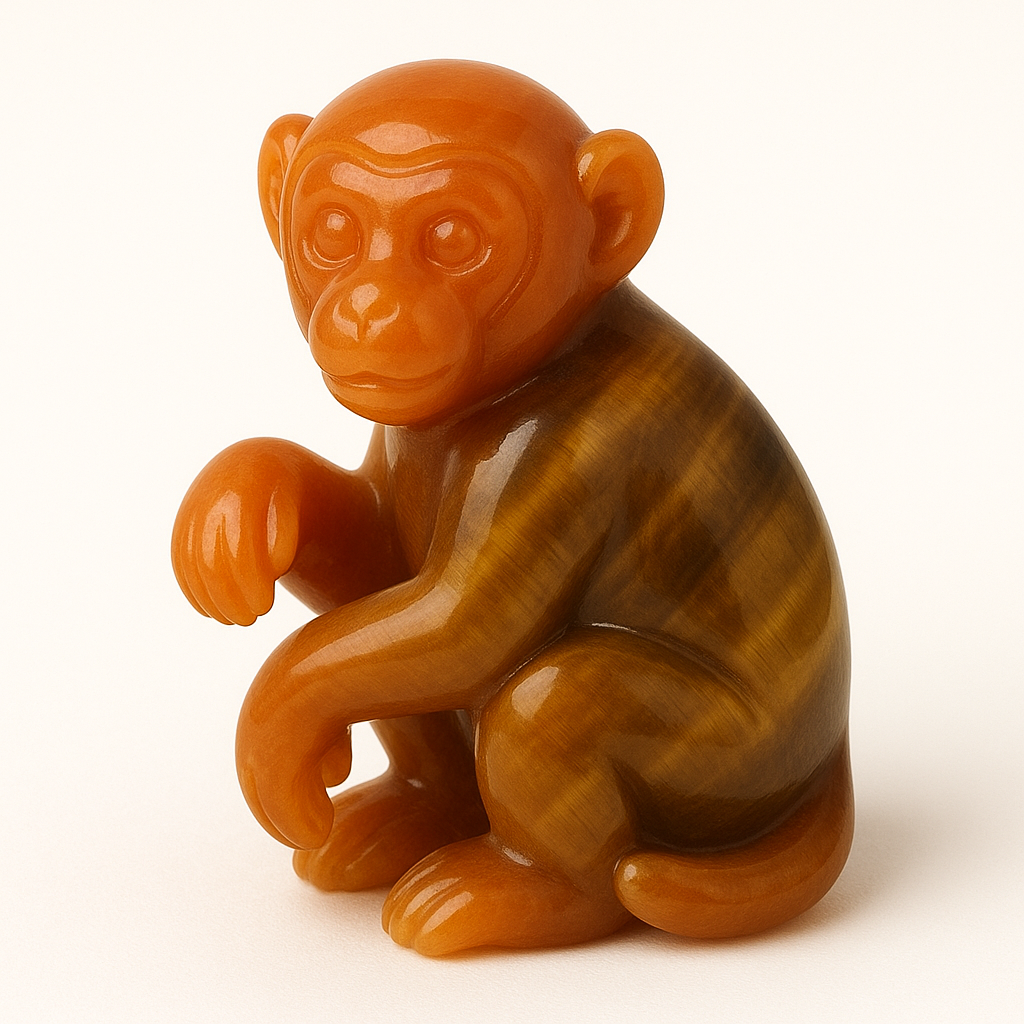
The Symbolism of Monkeys
Share
Agile, alert, and filled with ceaseless motion, the monkey is a being of curiosity unbound, intelligence expressed through play, and the dance between instinct and thought. It does not sit in quiet reflection—it moves, tests, mimics, and learns by doing. The monkey is an emblem of mental flexibility, relational dynamism, and the sacred role of laughter and cleverness in the evolution of consciousness.
To contemplate the monkey is to witness the raw spark of awareness at play, a self that is not yet fixed, but in joyful experimentation with its own potential.
The Trickster and Mirror in Cultural Memory
Across countless mythological systems, the monkey appears as a trickster, a divine fool, and a bridge between the primal and the intelligent.
In Hindu tradition, Hanuman is the great monkey deity—a being of immense strength, devotion, and service. Though playful and mischievous in origin, Hanuman becomes the loyal servant of the Divine, showing that even the seemingly chaotic mind can be transformed into love through discipline and purpose.
In Chinese cosmology, the Monkey King Sun Wukong is bold, cunning, and rebellious—capable of great feats and deep trouble alike. He is the seeker who challenges the gods, yet ultimately finds clarity through his journey inward. His tale reminds the self that power without awareness leads to imbalance, but play guided by wisdom becomes mastery.
In African and Mesoamerican traditions, monkeys are often figures of jest, mimicry, and sacred mischief—beings who interrupt rigidity, and in doing so, reveal what is false through laughter or inversion.
The monkey, in all traditions, does not conform to stillness. It exposes pretense, teaches through reversal, and mirrors both the brilliance and confusion of early mind.
Mimicry, Mischief, and Mental Agility
Monkeys explore. They copy. They test limits—not from malice, but from pure desire to know what is possible. They are social learners, always watching, adapting, experimenting. This is not randomness—it is growth through immersion.
Their groups are dynamic—filled with touch, noise, signals, conflict, and reconciliation. This teaches the sacred nature of interpersonal learning, of identity shaped in the mirror of others, and of mind not as solitary observer, but as active participant.
Their humor is not accidental—it is medicine. The monkey reminds that to laugh is to disrupt distortion, and that joyful cleverness is as valuable as solemn insight.
Resonance with the Energy Centers
The monkey resonates primarily with the yellow-ray energy center—the solar plexus chakra, which governs personal identity, mental activity, social self-awareness, and the balance between self and other.
Yellow-ray in the monkey is vibrant, curious, and exploratory. It seeks not to dominate, but to understand the structure of the group, to test what roles exist, and to learn through relational dynamics. Its energy is quick, intelligent, and often boundary-pushing, inviting all to question what is real and what is performance.
There is also a secondary resonance with the orange-ray energy center—the sacral chakra, which governs emotional responsiveness, play, connection, and movement through polarity.
The monkey’s behaviors—its playfulness, its intimacy with group members, its sensory engagement with the world—reflect a deep orange-ray vitality. It moves through feeling and touch, laughter and expression, all in the context of relational polarity.
Together, yellow and orange form the monkey’s current:
mind that moves,
emotion that plays,
and the spark of self learning to dance within a world of others.
The One Who Teaches Through Play
To walk with the monkey is to allow the self to explore without shame, to laugh without loss of depth, and to understand that mind is not the enemy of spirit—it is its evolving companion. The monkey teaches that freedom comes not from suppressing curiosity, but from guiding it with heart and awareness.
The monkey does not meditate.
It moves.
It mimics.
It learns by doing—and laughing when wrong.
It teaches:
Let the mind play.
Let the self reflect.
And let learning be joyful, not heavy.